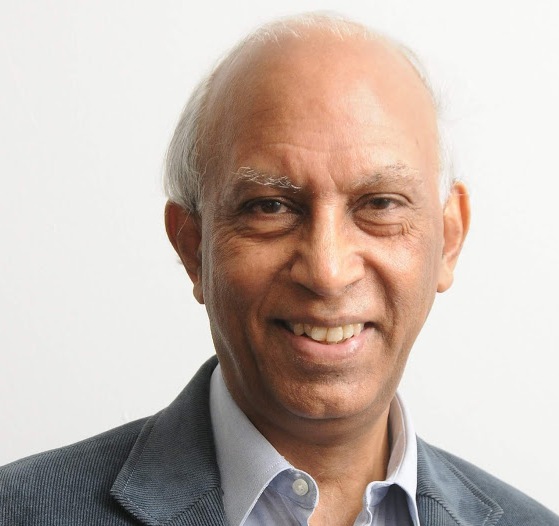
Rights Theory – II : Individual rights, human rights, women’s rights, minority rights, group rights
Dr Ishtiaq Ahmed
The fundamental philosophical basis of modern and contemporary Theory of Rights is that since human beings are rational creatures (the ontological basis) they can make rational decisions and exercise rational choice. Therefore, they are entitled to freedom. That is the basic premise of the Theory of Rights.
However, as I explained earlier such a theory of rights was coterminous with the displacement of unquestioned authority of the of priests and the Divine Rights of Kings and religious or sacred sources as such by reliance on the epistemological basis of reason,science and evidence.
Individual Rights
The modern approach on rights was essentially about the individual and the emphasis was on negative freedoms. It meant that state and society should interfere very little in the lives of the individuals. In other words, regulation of freedom should be minimum so that individuals could pursue their interests as freely as possible.
Modern capitalism rested on such an approach to rights, freedom and liberty. Being selfish or self-centred was no longer considered immoral or unethical.
As long as the market of ideas and goods was free and all individuals could present their products freely, the best ideas and goods would naturally and fairly fetch their reward. Classical liberalism represented such an idea of individual freedom and liberty.
The Utilitarian School which emerged during this period accepted that in the market some people will never be able to compete and benefit, but nevertheless most people would. Therefore one had to accept that one-third of society would be the losers, roughly.
However, criticism of such an idea of negative freedom started emerging in the 19th Century. J. S. Mill who started as a classic liberal and a utilitarian changed his views because the social misery early capitalism had created was perceived to threaten the functioning of society by protest and revolution. Social liberals began to emphasize positive freedom as well. It meant that the state had to undertake measures to maintain some level of welfare and equality.
Thus among positive freedoms was included the right to free education for all children; social reforms alleviating poverty were also accepted. Strangely enough the question of poverty was especially criticized by a school of conservatives known as Paternal Conservatives. For them those who had been favoured by God to high station in life had a moral duty to those God had placed under their leadership and protection.
The right to vote was expanded to the middle class which had not inherited its wealth, but acquired it through trade, colonial plunder, banking and a host of other miscellaneous activities
However, the most powerful criticism of individual egotism was proffered by socialists including Communists. They considered all inequalities a product of man-made economic, social and political conditions and not something divinely ordained.
Marx and Engels were at the forefront of movements and campaigns in favour of the right to an 8-hour working day and the right of education for workers and their children; and the right to vote for working men.
One theory is that when working men got the right to vote, liberalism was no longer just individualism but also democracy. Though women as yet did not have the right to vote or education.
Anyhow, social liberalism and socialism of the democratic type took many forms and one of them was social democracy with its strongest presence in Scandinavia especially Sweden.
Human Rights
In the aftermath of the unprecedented human suffering during World War II, the idea of rights was recast in a new language: human rights rather than individual rights became the new jargon of rights theory. Human rights recognized not only the right to negative and positive freedoms, but also the right to protect the individual and minorities from majoritarian democracy.
So, along with reason,compassion, human solidarity was included in the conception of human rights. Human rights belonged to all human beings irrespective of their given identities of race, religion, sect and so on. Although the individual continued to be the bearer of right,s some collective rights such as the Right to Form Trade Unions was included in the UDHR. The Soviet Union which participated in the formation of the UN took up social and economic rights which were included in the final UDHR document.
Women’s Rights
Now, while the UDHR was definitely a milestone in the forward movement of the Rights Theory, feminist writers began to argue that human rights assumed the male as the norm. Therefore, women needed explicit protection of their rights. That meant that all discrimination against women in the equal enjoyment of rights should be eliminated.
Another school demanded special rights for women since they were presumed to be different beings from men. The debate continues, but the UN has adopted The Abolition of All Discrimination against Women Convention in 1979.
The Islamic countries accepted that Convention, but rejected Article 16-A which gives women the right to marry any man of their choice. According to Islamic law, Muslim women can only marry a Muslim.
Children’s Rights
Another category of rights was accepted by the UN: those related to children. Children’s rights recognized the right of minors to education and not to be compelled to work for a living. Basic health facilities and children’s care were included. Protection of minors from sexual exploitation were also recognized.
Minority Rights
Another criticism of general human rights was that since they are rights belonging to individuals, they did not adequately protect the rights of minorities. Therefore minority rights were demanded to protect their language, identity and culture.
These have been recognized by several regional bodies . However, minority rights do not include the right to self-determination leading to exit from a postcolonial state. States are not willing to recognize minority rights, if they can lead to the breakup of a state.
Group Rights
Apart from minority rights another category of rights have been advanced by some theorists. I being one of them. Often times minority and group rights are used interchangeably because minorities tend to be usually the weakest sections of society and therefore a group which needs special protection. However, group rights can include large numbers of people who need to be provided facilities and opportunities to become active citizens of society. For example, through reservations of jobs and places in educational institutions and legislative assemblies, Dalits have been constitutionally guaranteed some protections which would not be otherwise possible.
One can also think of women as a large group which needs to be given special rights and protections as a group. However, group rights should under no circumstance mean the group gaining control over the individual. Rights should always belong to the individuals, but special protection can be provided to some special groups which are greatly disadvantaged historically and contemporaneously.
Conclusion
As should be obvious from the above presentation rights have grown out of a mixture of abstract thinking and concrete practice. Each addition to the rights theory derives from realizing the inadequacy of a particular position on rights in the light of experience and thus more and more specific rights have been added to the growing list of rights.
In the last 75 years (beginning with 1945) more rights have been recognized and given legal coverage by individual states, regional organizations such as the European Court of Human Rights, and international institutions such as the UN than in the 2500 years which preceded this short period in history.
Of course from recognition to implementation is another thing. However, first comes the awareness and then the campaigns and struggles to have such rights translated into legally binding commitments of states.




